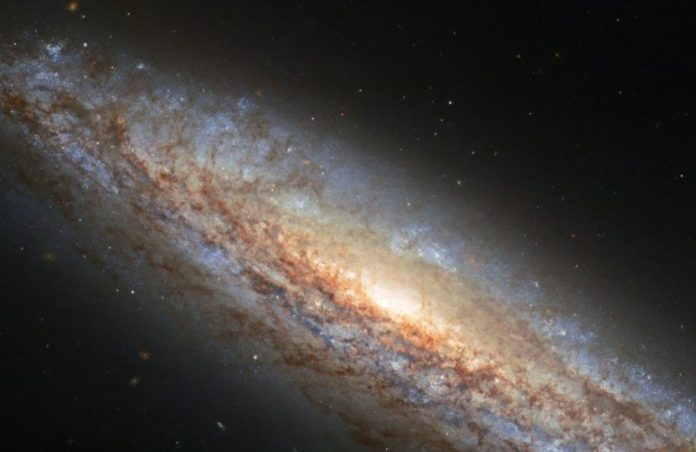The Hubble Space Telescope has managed to capture a snapshot of the “majestic spiral galaxy” in which a particularly intense episode of star formation occurs.
NGC 4666 steals the show in this Hubble Space Telescope snapshot from NASA/ESA. This magnificent spiral galaxy, located approximately 80 million light-years away in the constellation Virgo, is undergoing a particularly intensive event of star formation.
Starburst galaxies are named after galaxies that generate stars at an unusually fast rate.
It is a galaxy with a starburst, that is, a galaxy that is “forming stars with abnormal speed”, explains ESA.
The starburst in NGC 4666 is considered to be caused by gravitational interactions with its rowdy companions, which include the neighboring galaxy NGC 4668 and a dwarf galaxy.
The surge of star formation in NGC 4666 is causing a rare type of extreme galactic weather known as a superwind – a massive movement of gas from the galaxy’s brilliant central core out into space.
This superwind is caused by pushing winds from short-lived massive stars created during the starburst of NGC 4666, as well as extraordinarily intense supernova explosions.
Within the past decade, two such supernova explosions have been observed in NGC 4666, one in 2014 and the other in 2019. The star that exploded in 2019 was now discovered to be 19 times as large as our Sun!
At their brightest, supernovae are often the brightest sources of light in their galaxies, glowing so brightly that they can be seen from the farthest reaches of the Universe. In this image, the 2014 supernova in NGC 4666 is still active, but more than 900 days after it peaked, the supernova has faded from its previous brilliance and appears to be just another star in this bustling galaxy.
The flood of superheated gas emitted by NGC 4666 is truly massive in scale, spanning tens of thousands of light-years, although it is unseen in this image.
The superwind’s extraordinarily high temperature causes it to appear as a brilliant plume in x-ray or radio studies, but not in visible wavelengths seen by Hubble’s Wide Field Camera 3.
You were reading: Hubble shows a galaxy where stars are born with unusual speed
